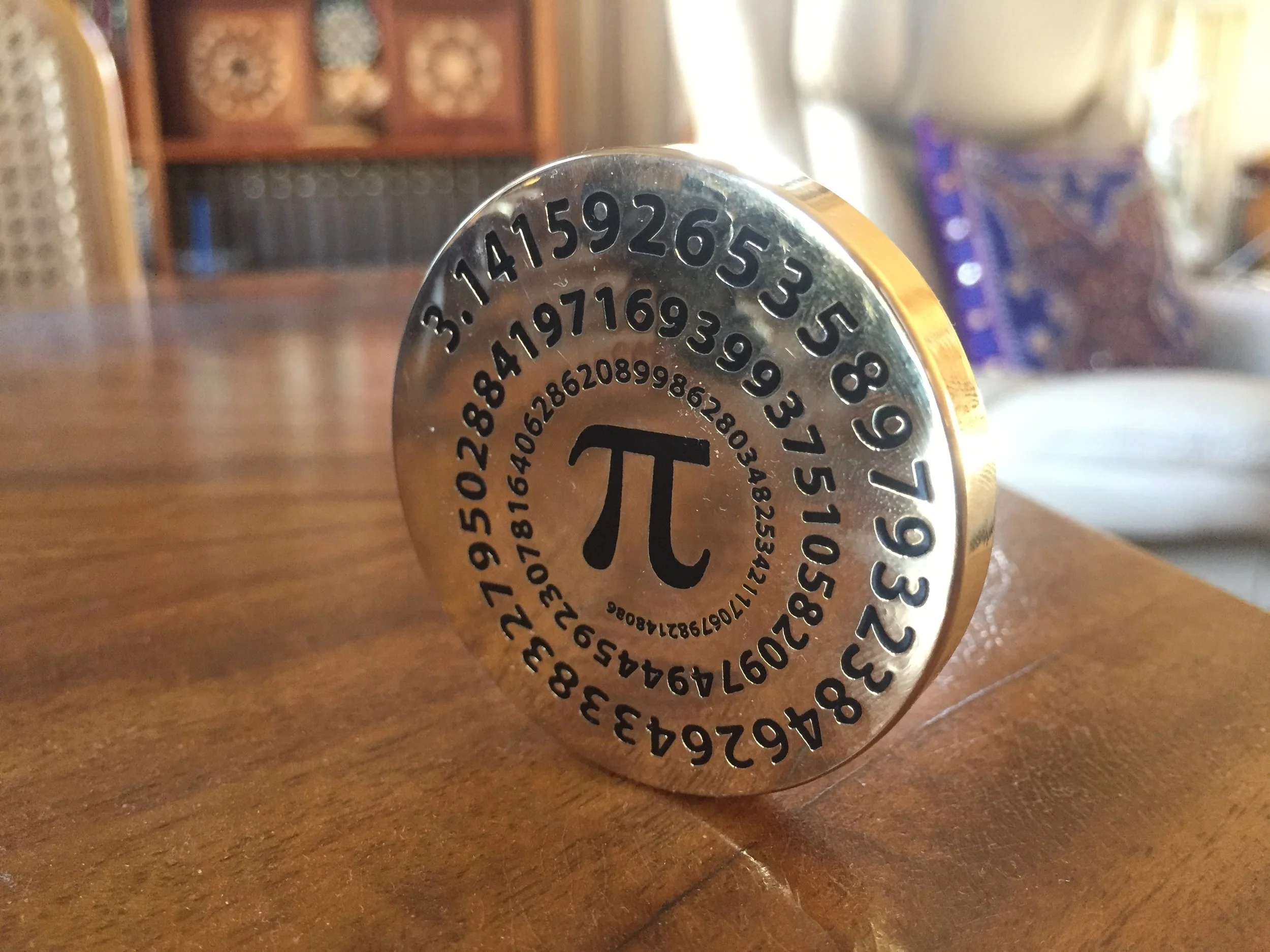
What is the PiTOP?
It is the physical embodiment of the mathematical constant Pi, or, in Greek, π. This brass disk has radius r = 1” and thickness t = 1/π” ~ .32”. It weighs ~ 4.8 ounces, and it displays the first 109 digits of Pi.
It is an executive fidget device.
It is a tactile stress reliever.
It is an elegant paperweight.
It is the ideal March 14 Pi Day gift.
It symbolizes profit in economics.
Spin the PiTOP like you would a coin on a hard, smooth surface, and it delights with a hypnotic sound and light show, creating eye catching visual patterns and illusions.
The PiTOP will be available in a limited edition in the near future on Etsy here.
Cubing the PiTOP
The PiTOP is designed in the shape of a right circular cyclinder of radius r and thickness t. Its special feature is that the thickness t is equal to the radius r divided by π. The volume V of a right circular cylinder is given by:
Vcylinder = π r^2 t = π r^2 r/ π =r^3 = Vcube
That is, the volume of the PiTOP right circular cylinder of radius r is exactly equal to that of a cube of side length l = r. Voila!
You may not be able to square the circle in a finite number of steps with a straightedge and compass, but the PiTOP automatically cubes a cylinder!
The Physics of the PiTOP
Spin the PiTOP as you would a coin. It will spin but it will also roll on its edge. As the PiTOP loses energy to friction, the angle alpha (in degrees) that it makes with the spinning surface will decrease. The spin frequency will also decrease but - seemingly paradoxically - the rolling (or precession) frequency (in Hz) omega will increase. Just before the PiTOP motion comes to a stop, the frequency of rolling (or precession) seems to increase without limit! See the figures below showing an example of the motion of a prototype of the PiTOP. The data is based on high-speed videos made and analyzed by the Australian Physicist Rod Cross from the University of Sydney.







